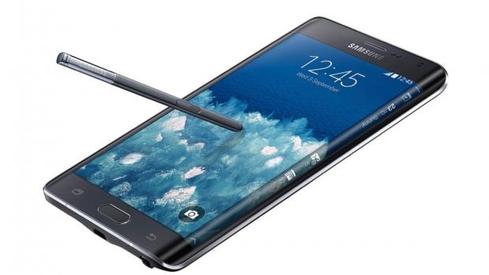Chromebooks Gain Traction in the EnterpriseChromebooks Gain Traction in the Enterprise
These low-cost, web-based devices are wedging themselves into the crowded device repertoire for enterprise end users. Here's what IT needs to know.


iPhone 6s And 7 Other Smartphones To Watch In 2015
iPhone 6s And 7 Other Smartphones To Watch In 2015 (Click image for larger view and slideshow.)
For CIOs and IT organizations, managing user end points has become more difficult in the past few years as device variety has exploded. Not only are IT departments overseeing PCs and laptops, they also have to accommodate tablets and smartphones, which have become typical ways employees complete their work. One more option, the Chromebook, has been gaining traction.
First introduced in 2011, Chromebooks are low-cost laptops that run Google's Chrome OS, an open source, browser-based operating system. The devices often lack a hard disk drive, since they're designed primarily to access cloud services and Web-based applications.
Traditionally, these systems have had a decidedly consumer bent. They are low cost, with prices starting at around $150 for a basic model. A variety of hardware suppliers sell them, including Acer, Hewlett-Packard, Dell, and Lenovo.
[ Where are the IT dollars going? Read IT Spending Reports Show A Tech Market In Transition. ]
Market research firm Gartner expects sales of Chromebooks to rise by 27% this year, compared with last year, and reach 7.3 million units. Business users are one factor driving this growth. Why? In this era of Bring Your Own Device (BYOD), employees like the processing power, screen size, and flexibility that these systems offer.
IT departments are enticed because these systems are simpler to manage than other end points. "The value proposition for Chromebook is its ease in manageability," said Isabelle Durand, principal analyst at Gartner, in an interview.
The system does not store data locally, so fewer problems arise. These products largely run only the browser locally, so software updates are not needed as often as with traditional end points. As with virtualized desktops, IT can fix application problems centrally, rather than having to dispense a tech to a remote location.
Warding Off Malware
Security is another strong feature. These systems run software locally, so they are less prone to the malware found on other user end points.
Available software has been a bugaboo that vendors have tried to address. Business tools, such as content-sharing software, videoconferencing, and collaboration apps, have been tailored to these systems. For instance, Google developed Chromebook for Work, a suite of office applications.
A glaring weakness was an inability to work with Microsoft productivity tools, such as Office. Recognizing that barrier, Google teamed up with Citrix to deliver Citrix XenApp on Chromebooks, and VMware to offer VMware Horizon View. With these products, enterprises can support Windows business applications on Chromebooks.
More Training Needed
Not all businesses are jumping on the Chromebook train. CIOs need to educate support staff members so they understand how to work with the systems, and extend system management tools to one more device type.
Business interest has come from small and midsized businesses (SMBs) and vertical industries. (Chromebooks have been quite popular in the education market.) "A Chromebook is a device that can be considered by SMBs or new startup companies that do not have the resources to invest too much in IT infrastructure," said Gartner's Durand in a statement.
Chromebooks require that companies move to a public cloud. Larger companies, especially those in financial services and health care, are concerned about compliance issues.
Network connectivity is a potential downside, especially with the lowest-cost models. Since the systems often lack a hard drive, users cannot work if they do not have network access. To be effective, employees require 24/7 high-speed access, a feature that may be lacking as they roam from place to place.
Nonetheless, as the diversity of end point devices in the enterprise increases, Chromebooks extend the IT service repertoire further. "The decision to move to Google Chromebooks for a large-scale enterprise has clear potential benefits, particularly in terms of cost," said Philip Carter, vice president of enterprise infrastructure and software research at International Data Corp. (IDC) Europe, in a statement. Consequently, these systems should be on CIO's radar.
About the Author
You May Also Like






